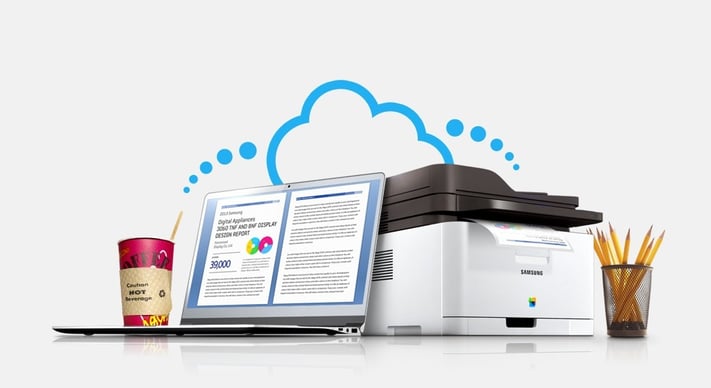As Samsung is popular for their reputation of having quality and innovative products, this has put a great pressure on the company to continuously churn out impressive, “never before” products and services, and to continue remaining on top. And one of the most successful solutions is to leverage expertise and technologies from AWS (Amazon Web Services).
Samsung Cloud Solutions Platform
The Samsung Cloud Print platform provides mobile cloud printing capabilities to office users and mobile workers and aims to take advantage of the current cloud services and mobile printing trend.
Read more: ASEAN IT Trends 2017 Review - Cloud Computing, IoT, and More
Samsung envisioned the solution to be available for any device, anywhere and the cloud printing platform would be the best in class innovation, further converges mobile and traditional enterprise management and document workflows.
Samsung also planned to reuse the new platform in a variety of projects. Therefore, one of the requirements was the platform has the ability to be modular, easily replaceable without re-development efforts and would provide infinite horizontal scalability.

The Samsung – Amazon partnership
Samsung chose to partner with Amazon due to their extensive expertise on automating deployment and their selection of hybrid, robust cloud infrastructures that would bring substantial benefits for Samsung, faster application performance, auto-scaling, ability to self-serve, security… just to name a few. All these could subsequently help Samsung in building high-performance design at an extensively lower overall cost.
Numerous AWS services are used in Samsung Cloud Print solution such as Elastic Compute Cloud (EC2), CloudFormation, OpsWorks, VPC, Simple Storage Service (Amazon S3), etc.
With such complex business goals and requirements, every stage of the process required major customisation, evaluation, and testing. After each iteration, new complex challenges would arise. This was to ensure the feasibility of ROI; therefore, every layer of the solution had to be evaluated, numerous technologies were deployed, each component and subsystem was measured and detailed cost profiling was showcased.
Further into the development process, it became clear that the solution also needed to include analytics, monitoring and stability in order to be deployed in the enterprise private cloud without any connection outside of the firewall.
The full stack then further developed with the induction of ELK (Elasticache, Logstash, Kibana) in Samsung Cloud Print and Device Monitoring Solutions. The platform design was later refined to be focused more on AWS CloudFormation / OpsWorks and pure Chef. All the updates and redesigns were necessary for further optimisation and cost management.
Read more: Oil Companies Adapting to the New Normal of Low Prices
Significantly cut down on deployment times
One of the major concerns that Samsung faced with deploying full stack dev/ test instances was the duration of completion which would initially take up to 3-4 hours. In order to fix the problem, Samsung and AWS then created a 2-stage automated process which, in the end, had significantly reduced deployment times to just mere minutes.
The first stage of the process created new Amazon Machine Images (AMI) with updated software/ components. This step ensured that AMIs were up-to-date with current patches and software distributions.
The second stage of the process created the instance and managed the final configuration tasks. As a result, Samsung was able to deploy fully functional dev and test instances in 10-15 minutes for small instances and 5-6 minutes for large ones.
Endless innovative possibilities
Keeping up with Samsung’s demands for cutting-edge technologies and requirements for excellence is not at all easy but Amazon was able to satisfy all. Amazon brought speed, agility, rapid adaptation, constant technological improvements. Cloud printing services became popular among end-users which drove Samsung to take its innovations a step further and start experimenting with AWS IoT through a proof of concept.
There will also be endless possibilities for Samsung to develop additional services connecting Samsung devices as demands arise in the future.
With added business value, Samsung once again proved to be one of the most innovative organisations. The agility obtained through the newly developed cloud infrastructure allowed Samsung to shorten the overall time to market for products and services, keep a low profile for IT costs while maintaining its leading position in innovation and a competitive edge in the market.
Want to read more Digital Transformation-related content? Subscribe to our blog to keep up-to-date with the latest trends in the industry.
Source:
Samsung’s Story: Digital Transformation on AWS, with the Help of Premier AWS Partner ClearScale. June 2016. aws.amazon.com/blogs/apn/samsungs-story-digital-transformation-on-aws-with-the-help-of-premier-aws-partner-clearscale English
English  Vietnamese
Vietnamese 

